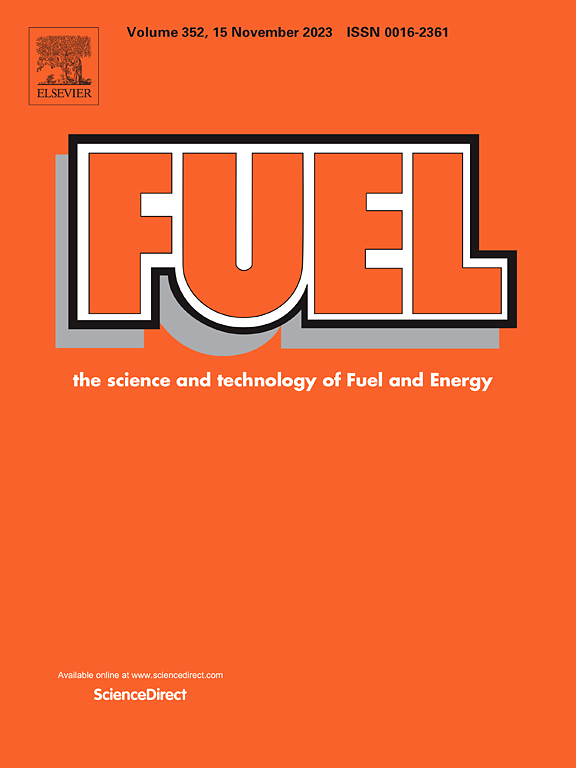Controlled synthesis of the M doped (M = Fe, Cu, Zn, Mn)-Co4S3/Ni3S2 catalyst with high electrocatalytic performance for hydrogen evolution reaction in seawater and urea
IF 6.7
1区 工程技术
Q2 ENERGY & FUELS
引用次数: 0
Abstract
Electrolysis of seawater is a promising method for producing hydrogen, but sluggish reaction kinetics and electrolyte containing corrosive ions limit its development. In this work, a series of M doped (M = Fe, Cu, Zn, Mn)-Co4S3/Ni3S2 catalyst has been prepared on Ni foam by hydrothermal method with excellent seawater and urea splitting performance. The unique 3D porous structure provides a large number of active sites for the catalyst, which has strong catalytic activity. Fe-Co4S3/Ni3S2 electrode showed excellent hydrogen evolution reaction (HER) catalytic activity in 1 M KOH + seawater and 1 M KOH + 0.5 M urea, driving a current density of 10 mA cm−2 at a low overpotential of 81 and 66 mV. In addition, Fe-Co4S3/Ni3S2 electrode also shows strong stability in 15 h stability test. The results show that although the impurity ions in seawater affect the activity of catalyst, the corrosion resistance of catalyst also improves the catalytic activity and stability. Density functional theory calculations show that this Fe-Co4S material exhibits the optimal Gibbs free energy of hydrogen, the introduction of this Ni3S2 material enhances the electrical conductivity of the material, and the synergistic catalysis of the two materials promotes the optimal hydrogen production performance of the Fe-Co4S3/Ni3S2 material. This work provides a novel understanding for the research of catalysts used in the electrolysis of seawater and urea.
掺杂 M(M = Fe、Cu、Zn、Mn)-Co4S3/Ni3S2 催化剂的可控合成及其在海水和尿素中氢进化反应的高电催化性能
电解海水是一种很有前途的制氢方法,但反应动力学缓慢和电解液含有腐蚀性离子限制了其发展。本研究采用水热法在泡沫镍上制备了一系列掺杂 M(M = Fe、Cu、Zn、Mn)-Co4S3/Ni3S2 催化剂,具有优异的海水和尿素拆分性能。独特的三维多孔结构为催化剂提供了大量的活性位点,具有很强的催化活性。在 1 M KOH + 海水和 1 M KOH + 0.5 M 尿素中,Fe-Co4S3/Ni3S2 电极表现出优异的氢进化反应催化活性,在 81 和 66 mV 的低过电位下可驱动 10 mA cm-2 的电流密度。此外,Fe-Co4S3/Ni3S2 电极在 15 小时稳定性测试中也表现出很强的稳定性。结果表明,虽然海水中的杂质离子会影响催化剂的活性,但催化剂的耐腐蚀性也提高了催化活性和稳定性。密度泛函理论计算表明,Fe-Co4S 材料具有最佳的氢气吉布斯自由能,Ni3S2 材料的引入增强了材料的导电性,两种材料的协同催化促进了 Fe-Co4S3/Ni3S2 材料的最佳制氢性能。这项工作为研究用于电解海水和尿素的催化剂提供了新的认识。
本文章由计算机程序翻译,如有差异,请以英文原文为准。
求助全文
约1分钟内获得全文
求助全文
来源期刊

Fuel
工程技术-工程:化工
CiteScore
12.80
自引率
20.30%
发文量
3506
审稿时长
64 days
期刊介绍:
The exploration of energy sources remains a critical matter of study. For the past nine decades, fuel has consistently held the forefront in primary research efforts within the field of energy science. This area of investigation encompasses a wide range of subjects, with a particular emphasis on emerging concerns like environmental factors and pollution.
 求助内容:
求助内容: 应助结果提醒方式:
应助结果提醒方式:


